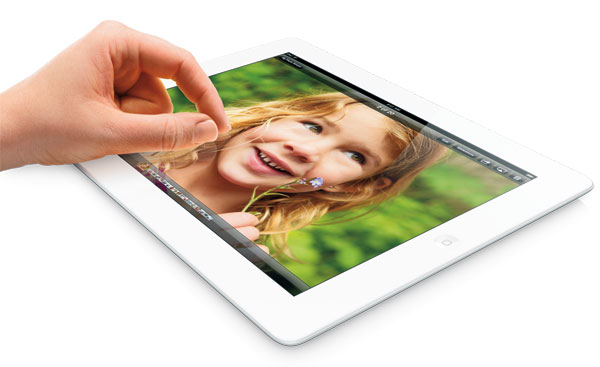Size Matters

When selecting a tablet, you pretty much have two choices: big or small. The bigger models, including Apple’s full-size iPad, have screens that range from 9 to 10 inches diagonally. The smaller slates have 7- to 8-inch displays. So which is best for you?
A smaller tablet weighs less, costs less, and is easier to carry and hold in one hand. But a larger slate has advantages too, particularly if looking for one that can substitute for—or replace—a conventional laptop. The biggest advantage? Its screen, of course. Whether you’re watching a Netflix video, shopping online, or using Google Maps, bigger is better: “No matter what you’re doing, 10 inches of real estate is going to give you a better experience than 7 or 8 inches,” says Stephen Baker, a consumer technology analyst for the NPD Group. If you choose to go big, which tablet should you buy?
If price is a factor, two excellent 9-inch tablets cost nearly half as much as an entry-level iPad: Amazon’s Kindle Fire HD 8.9 ($269 to $514) and Barnes & Noble’s Nook HD+ ($269 to $299). The Fire HD 8.9 features crisp 1920-by-1200-pixel resolution display and an intuitive interface that’s tightly integrated with Amazon’s vast array of online services—music, movies, file storage, and shopping. High-end Fire HD 8.9 models come with reasonably priced 4G LTE from AT&T: $50 for a year of cellular service, albeit with a low 250-megabyte monthly cap. (If planning to watch a lot of movies on the Fire,consider upgrading to a pricier cellular plan or stick with Wi-Fi.)
The Nook HD+ isn’t as well known as its competitors, but it’s a top-notch tablet. With its sharp 1920-by-1280 display, the Nook HD+ is great for reading full-color magazines and e-books, playing games, and watching videos. Unlike the Fire HD 8.9, the HD+ lacks a cellular option, so Wi-Fi will have to do. Nook users can download popular apps, including Facebook, Twitter, Netflix, and Pandora (for streaming music); from either the Nook Apps store or Google Play, the main apps market for Android devices If money’s not an object, it’s hard to go wrong with the Apple iPad ($499 to $929), which features a gorgeous 2048-by-1536 resolution. Weighing up to 1.46 pounds, the iPad is thin and light. With an optional keyboard ($60-$100), it makes a decent, if limited, laptop replacement. Another iPad advantage is its vast selection of tablet -specific apps: more than 300,000.
If familiar with Google’s Android software, you should also consider the Google Nexus 10 ($399 to $499), a 10-inch slate with a best-in-class 2560-by-1600 resolution display. The Nexus 10’s Android interface is fine-tuned for tablets, so users of Android smartphones should take to it right away. Like the Nook HD+, the Nexus 10 doesn’t offer a cellular option, so you’ll need Wi-Fi to connect to the Internet.
If your main criterion is to eliminate the need for a separate laptop, you might want to look at Microsoft’s Surface Pro ($899 to $999). This is a hybrid designed to do double duty and comes with an optional snap-on keyboard ($120 to $130). Sans keyboard, the Surface Pro is a powerful 2-pound touch-screen tablet with a lovely 1920-by-1080, 10.6-inch display. Attach the keyboard, and you’ve got a full-fledged Windows 8 laptop. While the Surface Pro is twice the price of some large tablets, it does the job of two devices.